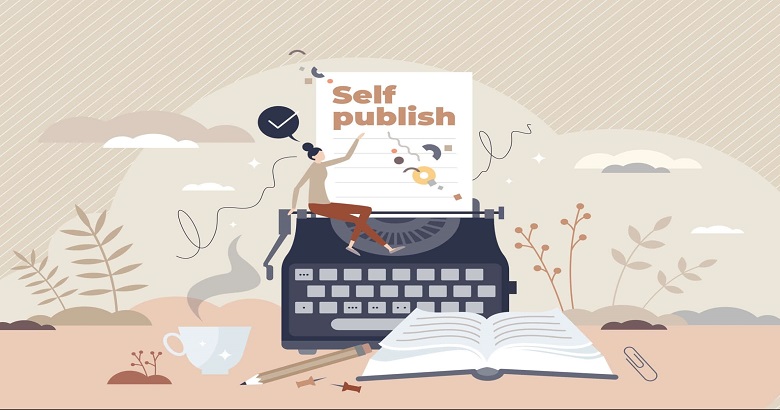How much does it cost to self-publish and print a book? This is a question many authors ask themselves when considering taking the self-publishing route. There are initial costs involved in getting your book ready to publish as well as ongoing costs for printing, distributing, and marketing your book. Let’s take a closer look at the typical expenses you may encounter.
Costs to Prepare Your Book for Self-Publishing
Before you can publish and print your book, there are some upfront costs to prepare your manuscript. Here are some of the major expenses:
Editing – Professional editing is very important to ensure your book is polished and ready for publication. Costs for editing can range between $0.01-$0.03 per word depending on the level of editing needed. For a 50,000 word manuscript, expect to pay between $500-$1500 for a standard line edit. Developmental or structural editing may cost more.
Formatting – Your manuscript needs to be professionally formatted to the proper specifications for print and digital formats. Formatting costs usually range from $150-$250 for basic services up to $400-500 for more complex formatting needs. Hiring a freelance formatter is a good budget-friendly option.
Cover Design – An eye-catching, professional cover design is crucial for attracting readers. High-quality book cover design typically runs $250-$500 depending on the designer’s experience and any additional elements needed like interior formatting. Some authors choose cheaper do-it-yourself covers.
Proofreading – At least one round of proofreading is recommended after editing and formatting to catch any remaining errors. Proofreading costs average $0.005-$0.010 per word or $250-$500 for a typical book length.
ISBN Numbers – An ISBN (International Standard Book Number) is required for publishing and is a unique identifier for your book. ISBNs cost $125 for a package that includes both a paperback and ebook ISBN through major registration agencies.
Total estimated costs to prepare your book are $1000-$3000 depending on services needed before printing or self-publishing digitally through major retailers and distributors. For a leaner self-publishing budget, many tasks can be done using budget-friendly freelancers or DIY options.
Self-Publishing Platform and Distribution Fees
After preparing your book, it’s time to self-publish and distribute it via online retailers and other avenues. Major platforms charge the following publishing and distribution fees:
- Kindle Direct Publishing (KDP): No upfront costs. KDP takes 30% of net ebook revenue and 6% for paperbacks ordered through their paperback program.
- IngramSpark: One-time $49 enrollment fee. They take 13% of list net wholesale revenue for print books and 40% of list ebook pricing and retail upgrades.
- Draft2Digital: $49/year membership fee. They take 30% of net revenue from all sales across platforms like Apple, Kobo, and more.
- Smashwords: No membership fees. They take 25% of net ebook revenue sold through their distribution network.
- Print-On-Demand services like Createspace start at $0.00 per book printed as the print costs are deducted from book revenue by Amazon.
Expect ongoing distribution fees between 25-40% of sales revenues through major online retailers like Amazon, Apple, Google Play, and other marketplaces. These platforms handle printing, warehousing, and distribution in exchange for a percentage cut of sales.
Printing Costs for Self-Publishing

If you plan to print books in bulk to sell directly to readers, stores, or libraries, here are some estimated print production costs:
- Print quantities of 100 copies or less can cost $6-$10 per book to print depending on trim size, paper type, and cover binding method like perfect, saddle stitch, or case binding.
- For quantities of 100-500 copies, the per unit price goes down to about $4-$8 each book.
- Quoted print costs at full production quantities of 1000+ copies averages around $2.50-$5 per book depending on specs.
For short runs under 100 copies, the easiest option is print-on-demand services offered through IngramSpark or CreateSpace where there are no upfront costs. Their print fees are deducted from sales revenue.
Marketing Costs for Self-Published Books
Don’t neglect establishing a marketing budget, or your books won’t sell. Consider allocating at least 30% of your book’s price towards the following promotional expenses:
- Book trailers & video ads – $200-$500 for professional services.
- Book website or blog – $50-150 for hosting, templates, custom domain.
- Book launch party – $50-300 depending on location and catering.
- PPC ads on Amazon and Google – $50-300 per month for promotion.
- Print bookmarks, postcards, flyers – $50-150 for 500 of each item.
- ARC (Advanced Reviewer Copies) for bloggers – Price of each book x 10 copies.
- Author email list building & newsletter tools – $5-20/month.
- Giveaways and contests – Price of 5-10 books/month for prizes.
- Professional editorial book reviews – $50-250 per qualified review publication.
The true marketing costs are adjustable based on your budget. But expect to spend a minimum of a few hundred monthly over several months to successfully promote a new title through all available channels.
As you can see, while self-publishing allows for greater freedom and higher profit margins long term, there are substantial initial costs involved in the production, distribution, and promotion of professionally published quality books. A realistic budget for a complete self-publishing project should be at least $2000-5000 to properly prepare, publish, print, and promote a single book. Revenue from sales then allows costs to be recouped and royalties earned. With upfront investment and diligent ongoing marketing, self-publishing can yield excellent long term success and readership for dedicated authors.
Sums Up
To summarize, while traditional publishing offers less risk up front due to publishers funding production costs, self-publishing provides authors much greater creative control, timing flexibility and potential earnings long term.
Profitability ultimately comes down to an author’s ability to market and sell their work consistently over many months and multiple titles. Having a full understanding of costs to develop, produce, distribute and promote each new project is critical for financial planning.
Many successful independent authors find they need at least 2-3 years of steady work across 3-5 titles to start earning a sustainable living, as it takes time to build an audience. It’s important to have realistic sales goals and not expect to make a profit on the very first project.
Offering additional author services like freelance editing, proofreading or cover design can help supplement creative income in the beginning years. Teaching writing/publishing related skills is another option.
Crowdfunding platforms allow aspiring authors to gauge interest and pre-sell copies to help offset expenses. Extra funds may let hiring of premium services become possible sooner.
The most affordable path is usually a hybrid model – using cost-effective production paired with leveraging free marketing channels. Resources like newsletter lists and social platforms can be highly effective without major ad budgets.
Overall, self-publishing demands significant monetary investment and legwork, yet it rewards those with persistence the ability to potentially transform writing into a viable career path on their own terms. Proper planning and an entrepreneurial spirit are key ingredients for navigating this journey successfully.
Frequently Asked Questions
1. How do I choose a platform for self-publishing?
The top platforms are Kindle Direct Publishing (KDP) for ebooks, IngramSpark or Draft2Digital for ebooks and print, and CreateSpace which is owned by Amazon. Consider distribution reach, royalty rates, and fees to determine the best fit for your goals.
2. How do I establish a self-publishing business/LLC?
Consult legal guidance or use online resources to properly form an LLC, open a business bank account, apply for an EIN number for tax purposes. Keep business and personal finances separated for liability protection.
3. What's the best way to format my book for publishing?
Hire a professional book formatter who is experienced with the correct software and file specifications required by platforms. They ensure your interior and cover meet industry standards for printing and retail display.
4. How much should I price my book?
Popular ebook price points are $2.99, $3.99, $4.99 or $9.99 for longer works. Paperbacks generally range $6.99-$15.99 depending on length, genre and production values. Market research will help set fair rates that maximize readership.
5. What are the tax implications of self-publishing income?
Self-publishing revenues must be reported on your business tax return or personal return depending on LLC/sole proprietor status. Save receipts and track expenses to deduct costs from royalties to minimize self-employment tax burden. Consult an accountant for guidance.



